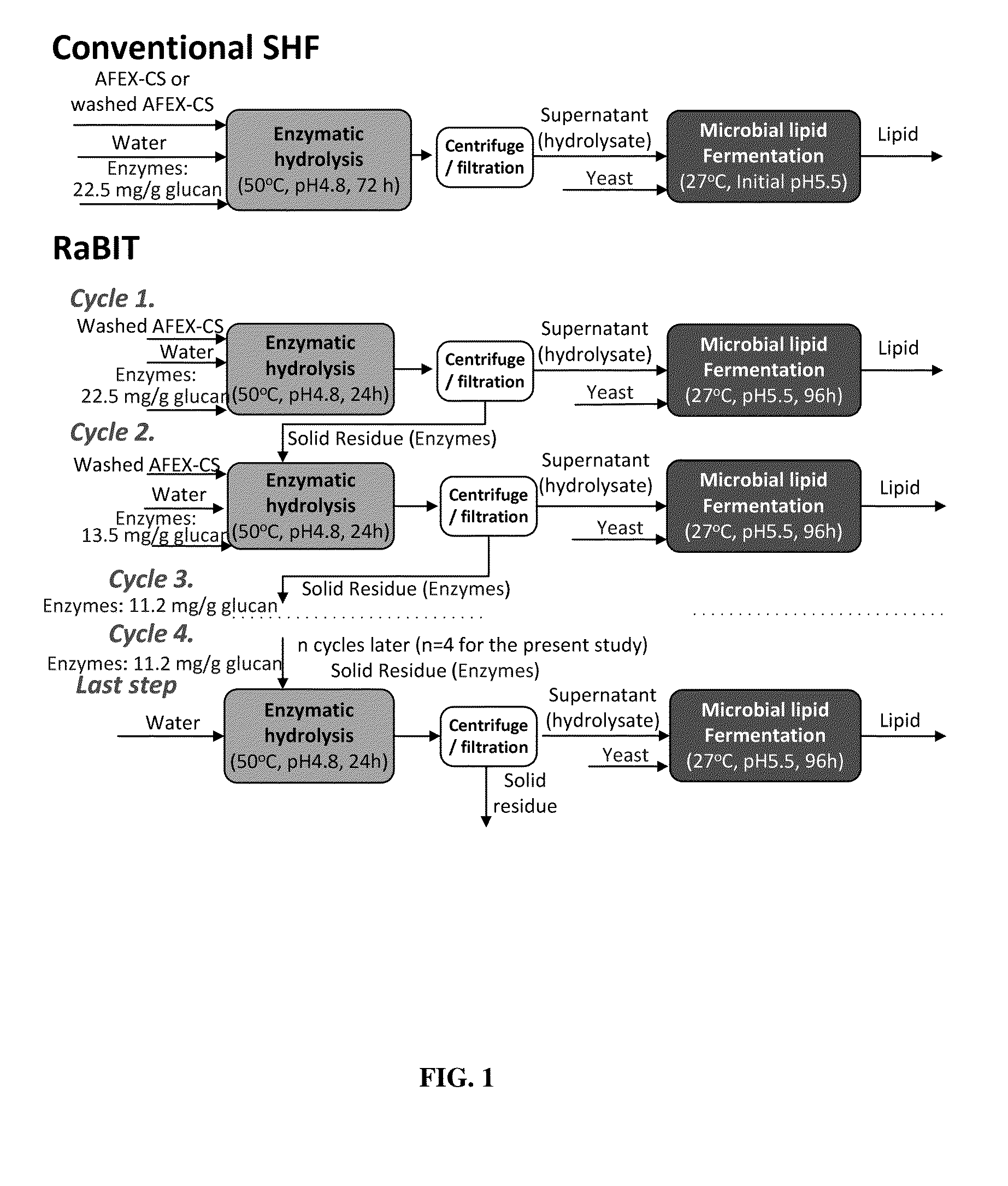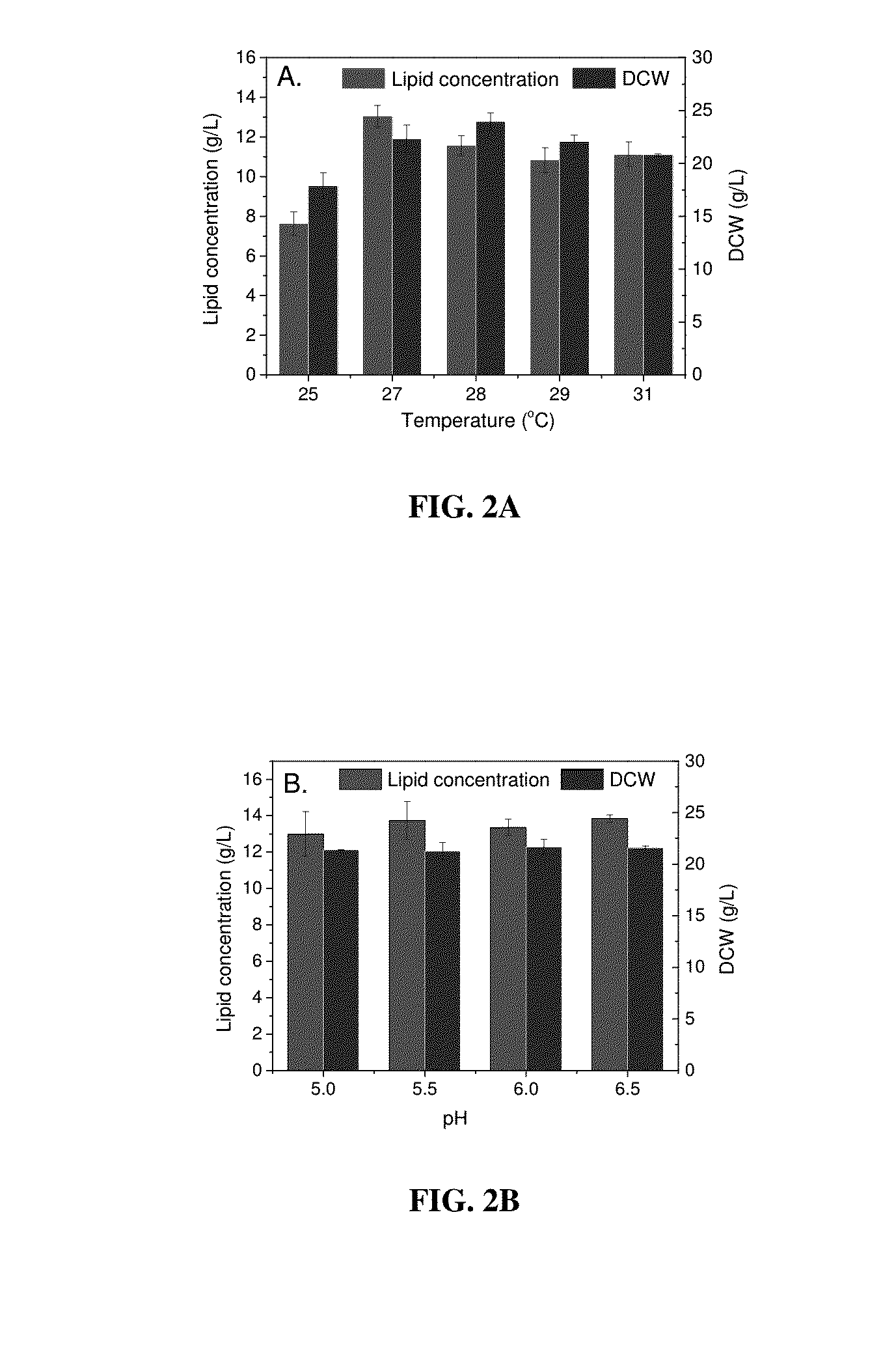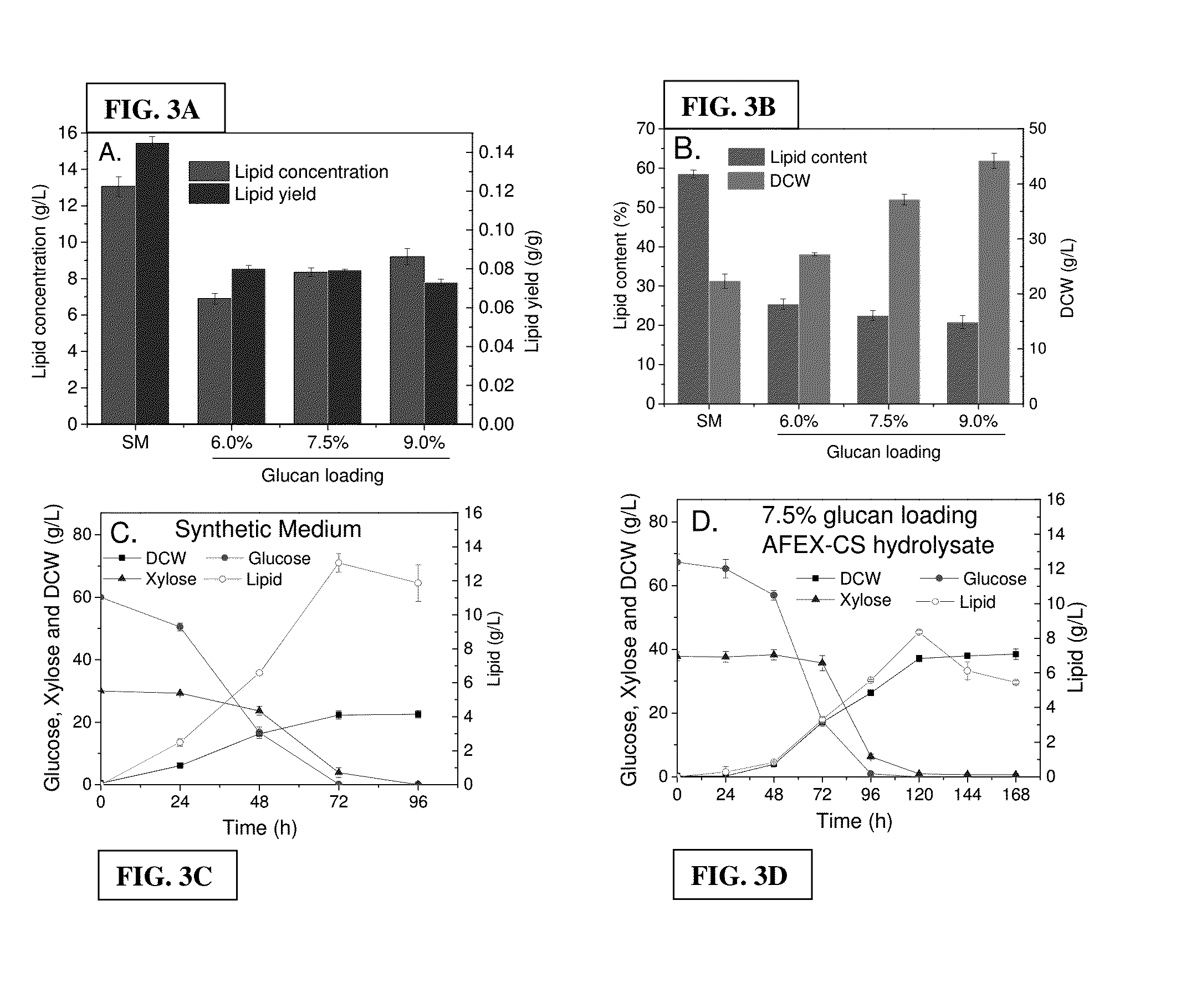Methods and yeast strains for conversion of lignocellulosic biomass to lipids and carotenoids
a technology of lignocellulosic biomass and conversion method, which is applied in the field of oleaginous yeast strains, can solve the problems of low lipid accumulation, low lipid production level of hydrolysates, and use of hydrolysates
- Summary
- Abstract
- Description
- Claims
- Application Information
AI Technical Summary
Benefits of technology
Problems solved by technology
Method used
Image
Examples
example 1
Optimization of Lipid Fermentation Conditions in Synthetic Medium
[0050]Culture conditions known to affect lipid production including nutrient level, temperature and pH were investigated for Lipomyces tetrasporus (NRRL Y-11562) grown in synthetic medium. For investigating the effect of nutrient level, carbon source glucose and xylose were fixed at 60 g / L and 30 g / L, respectively (modeled on 6% glucan loading AFEX-CS hydrolysate), and nitrogen source / nutrient source (yeast extract and ammonia sulfate) concentrations were varied, resulting in SM with different C / N ratios (Table 1). Ammonia sulfate was only included in the SM with C / N ratio of 16. As shown in Table 1, the SM with C / N ratio of 16 resulted in a DCW of 21.7 g / L with lipid content of 57.3%, lipid yield of 0.14 g / g consumed sugar and lipid concentration of 12.4 g / L. As (NH4)2SO4 was removed from the fermentation medium, which enhanced the C / N ratio to 53, the DCW increased to 25.4 g / L while lipid content decreased to 49.1% w...
example 2
AFEX-CS Hydrolysate Vs. Synthetic Medium for Lipid Fermentation
[0052]Lipid fermentations with Lipomyces tetrasporus (NRRL Y-11562) in SM (C / N=75) and AFEX-CS hydrolysates derived from enzymatic hydrolysis at 6.0%, 7.5% and 9.0% glucan loadings were compared under identical culture conditions (FIGS. 3A-D). The 6.0% glucan loading AFEX-CS hydrolysate contained similar sugar concentrations and C / N ratio as SM. However, much lower lipid concentration and lipid yield were achieved (FIG. 3A). DCW was significantly higher compared to SM though the lipid content was far lower (FIG. 3B). AFEX-CS hydrolysate contains numerous nutrient elements including vitamins and trace elements, which might have stimulated growth. Nevertheless, the presence of degradation products generated during pretreatment likely inhibited lipid biosynthesis. With increased glucan loading, DCW increased likely due to more nutrients and sugars available for cell growth, while lipid content decreased (FIG. 3B). Since 7.5...
example 3
Reduced Lipid Production in AFEX-CS Hydrolysate
[0054]Since nutrients and sugar concentrations almost proportionally increased as solids loading increased (sugar concentrations were shown in the caption of FIGS. 3A, 3B, 3C and 3D, the C / N ratios of different solids loadings were similar. As different solids loading cultures were compared, lipid content and lipid yield decreased with increased solids loadings (FIGS. 3A, 3B, 3C and 3D). Effect of AFEX-CS solids loading on lipid fermentation (FIGS. 3A and 3B) and time course of lipid fermentation (FIGS. 3C and 3D). 3A: effect of solids loading on lipid concentration and lipid yield; 3B: effect of solids loading on lipid content and DCW; 3C: time course of lipid fermentation in synthetic medium (C / N=75); 3D: time course of lipid fermentation in 7.5% glucan loading AFEX-CS hydrolysate. Fermentations were performed at 27° C. and pH 5.5. The fermentation times required to reach the maximal lipid concentration (shown in the figure) for SM (C...
PUM
| Property | Measurement | Unit |
|---|---|---|
| temperatures | aaaaa | aaaaa |
| temperature | aaaaa | aaaaa |
| optical density | aaaaa | aaaaa |
Abstract
Description
Claims
Application Information
 Login to View More
Login to View More - R&D
- Intellectual Property
- Life Sciences
- Materials
- Tech Scout
- Unparalleled Data Quality
- Higher Quality Content
- 60% Fewer Hallucinations
Browse by: Latest US Patents, China's latest patents, Technical Efficacy Thesaurus, Application Domain, Technology Topic, Popular Technical Reports.
© 2025 PatSnap. All rights reserved.Legal|Privacy policy|Modern Slavery Act Transparency Statement|Sitemap|About US| Contact US: help@patsnap.com



